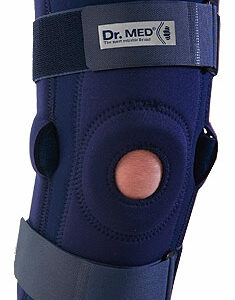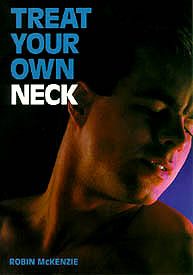Skiing Injuries
Updated:
Most skiing injuries occur traumatically, usually from a fall or due to a collision with another skier or stationary object. Traumatic skiing injuries often involve the knees, head and neck, shoulders, ankle, wrist or thumb. These injuries can include ligament sprains, joint sprains or dislocations, fractures or contusions, lacerations or concussion with some conditions being quite serious.
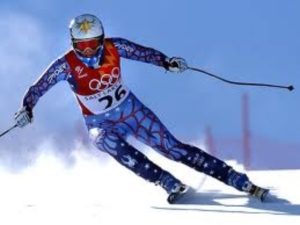
Most Common Skiing Injuries
Knee
ACL Tear
Tearing of the anterior cruciate ligament of the knee (ACL – Figure 1) typically following landing from a jump, or due to a fall or collision involving a hyperextension, sideways or twisting force to the knee. Often associated with a ‘snap’, ‘pop’ or ‘tearing’ sensation or a feeling of ‘something going out and then going back’ at the time of injury. Usually associated with severe pain at the time of injury, significant swelling within a few hours of injury and a feeling of knee instability or giving way of the knee during certain movements.
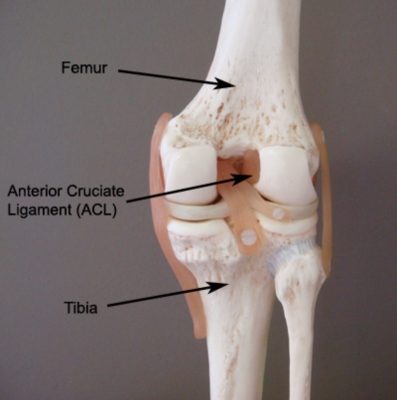

Members Only ContentBecome a PhysioAdvisor Member to gain full access to this exclusive content. For more details see Become a Member. Already a member? Login Now
Groin
Adductor Strain
Tearing of the adductor muscle (figure 5), typically following uncontrolled separation of the two skis or change-of-direction movements. Associated with pain on firmly touching the affected region and localised, one-sided groin pain, often aggravated by stretching the affected muscle (figure 6).
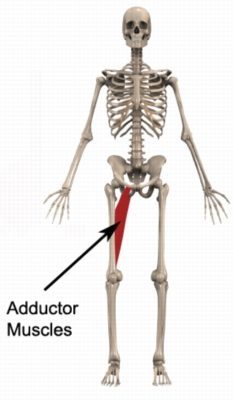
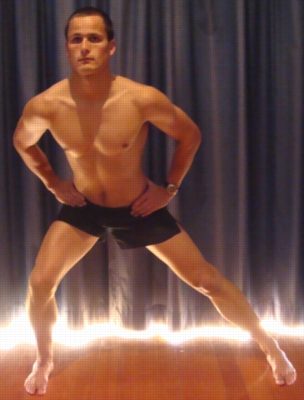
Head & Neck
Cervical Disc Bulge
Tearing of connective tissue surrounding a disc in the neck with subsequent bulging of disc material (figure 7). Typically as a result of a fall onto the head or neck (often with the head in a bent or twisted position), May cause neck pain centrally or on one or both sides of the neck, with or without symptoms radiating into the upper back, shoulder, upper arm, elbow, forearm, wrist or hand or headache. Pain may increase on firmly touching the affected level of the spine and there is often associated muscle spasm and restriction of spinal movement. Occasionally there may be no neck pain, with only symptoms down the affected arm or only headache. Pins and needles or numbness are occasionally present in the affected arm or hand. Symptoms often increase during with repetitive or prolonged slouching, bending forwards of the neck, shoulders forwards movements, lifting, sneezing, neck rotation or side bending movements and are often worse first thing in the morning.
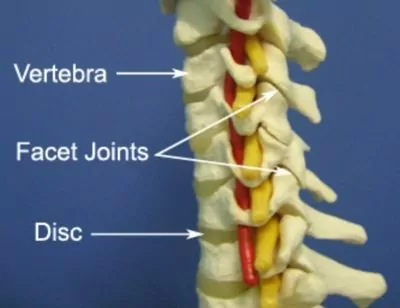

Members Only ContentBecome a PhysioAdvisor Member to gain full access to this exclusive content. For more details see Become a Member. Already a member? Login Now
Shoulder
AC Joint Sprain
Tearing of the connective tissue and ligaments of the Acromio-Clavicular joint (AC Joint – figures 8 & 9) typically as a result of a direct impact to the point of the shoulder during a fall or a collision. Causes pain at the top of the shoulder that may increase when lying on the affected side, moving the arm across the body and during certain other shoulder movements. There is also localised tenderness on firmly touching the AC joint (figures 8 & 9) and sometimes a noticeable step deformity.
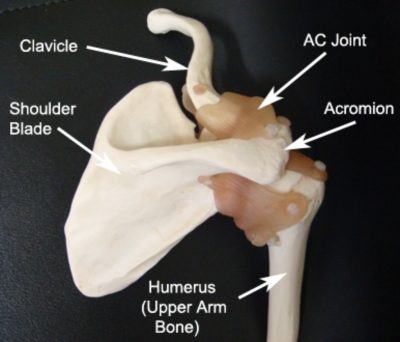
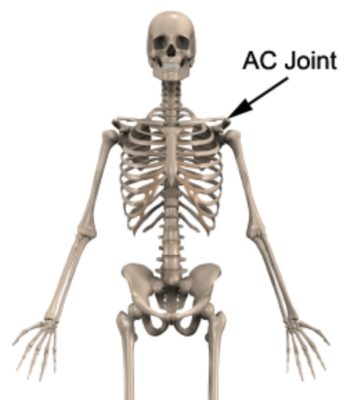

Members Only ContentBecome a PhysioAdvisor Member to gain full access to this exclusive content. For more details see Become a Member. Already a member? Login Now
Wrist & Hand
Skier’s Thumb
Tearing of connective tissue and / or ligaments holding the bones of the thumb together typically following excessive stretching of the joint in one direction (usually from the ski pole getting caught in the snow during a fall and forcing the thumb backwards). Associated with pain on firmly touching the affected joint, restricted joint mobility and often swelling.

Members Only ContentBecome a PhysioAdvisor Member to gain full access to this exclusive content. For more details see Become a Member. Already a member? Login Now
 Contributing Factors to Skiing Injuries
Contributing Factors to Skiing Injuries
A number of factors may contribute to the incidence or development of skiing related injuries, including:
- Inexperience
- Inappropriate warm up or cool down
- A lack of fitness or conditioning
- Muscle weakness (particularly the gluteals, adductors, quadriceps and core stabilisers)
- Excessive training
- Poor technique
- Inadequate recovery between sessions
- Poor flexibility (particularly in the adductors, hamstrings and gluteals)
- Tightness in specific joints (such as the hips)

Members Only ContentBecome a PhysioAdvisor Member to gain full access to this exclusive content. For more details see Become a Member. Already a member? Login Now
 Injury Prevention Tips for Skiers
Injury Prevention Tips for Skiers
- Warm Up & Cool Down properly
- Make sure you are ‘Fit to Ski’ (check out our Core, Gluteal, Quads & Balance Exercises)
- Maintain a healthy body weight to minimise the load on your knees
- Take a lesson to improve your technique
- Ski to your own ability level and on appropriate terrain for your level of experience
- Ski appropriately to the conditions

Members Only ContentBecome a PhysioAdvisor Member to gain full access to this exclusive content. For more details see Become a Member. Already a member? Login Now
 Physiotherapy Products
Physiotherapy Products
The following physiotherapy products are commonly prescribed to patients by physiotherapists to assist in the rehabilitation and prevention of skiing related injuries:
To purchase physiotherapy products to assist with injury rehabilitation click on one of the above links or visit the PhysioAdvisor Shop.
 Find a Physio
Find a Physio
Find a physiotherapist in your local area who can treat skiing related injuries.
Become a PhysioAdvisor Member
-
 Individual Membership (12 Months)$59.95 for 1 year
Individual Membership (12 Months)$59.95 for 1 year -
 Individual Membership (3 Months)$39.95 for 3 months
Individual Membership (3 Months)$39.95 for 3 months -
 Individual Membership (Yearly)$49.95 / year
Individual Membership (Yearly)$49.95 / year -
 Individual Membership (Monthly)$15.95 / month
Individual Membership (Monthly)$15.95 / month

Link to this Page
If you would like to link to this article on your website, simply copy the code below and add it to your page:
<a href="https://physioadvisor.com.au/injury-diagnosis/sports-injuries/skiing-injuries”>Skiing Injuries – PhysioAdvisor.com</a><br/>PhysioAdvisor provides detailed physiotherapy information on skiing injuries including most common skiing injuries, contributing factors and injury prevention tips.
Return to the top of Skiing Injuries.

